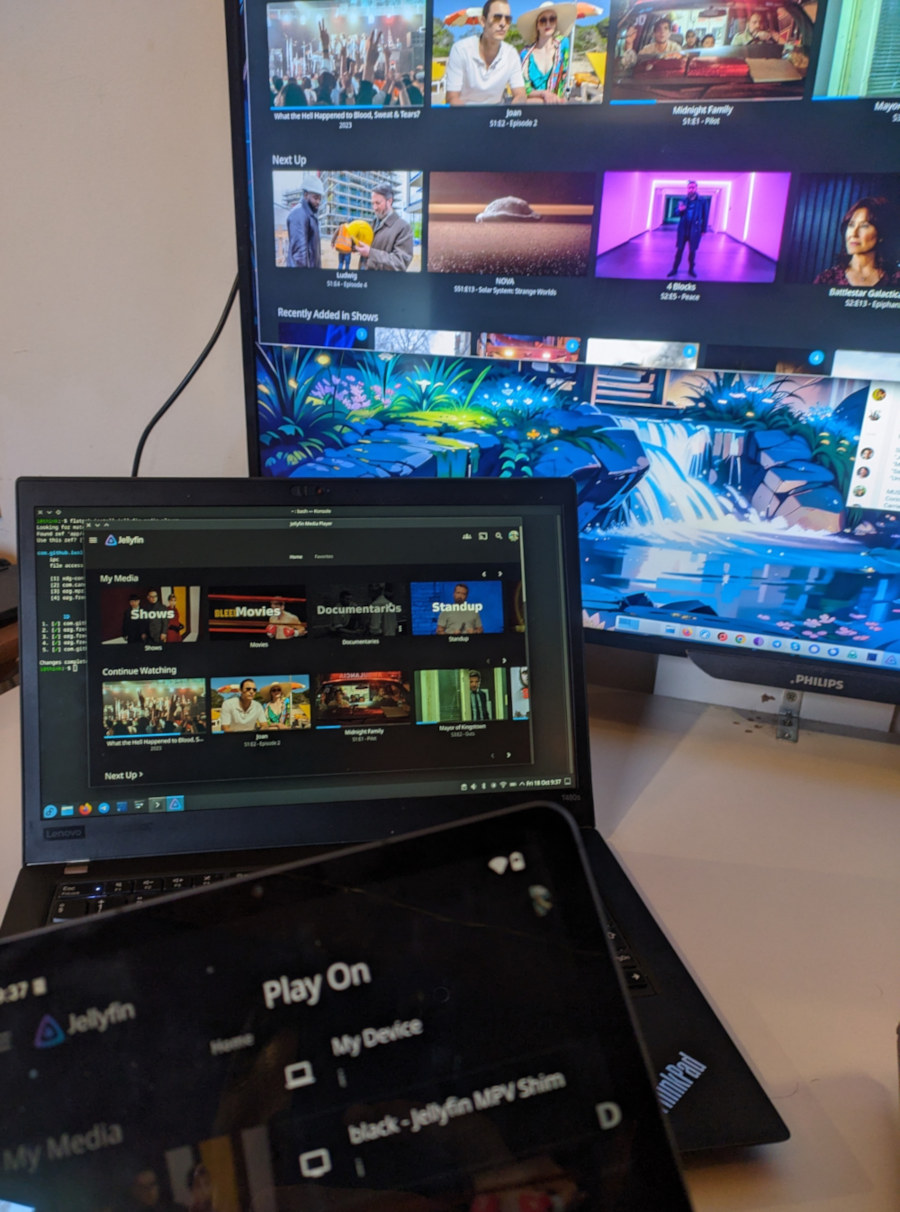Didn't even know it was possible, but I was able to connect to and control my local Jellyfin Media Player from my Android Jellyfin client. So to answer your question, its at least still working for one other person.
Jellyfin: The Free Software Media System
Current stable release: 10.10.2
Matrix (General Information & Help)
Matrix (Off-Topic) - Come get to know the team and blow off steam!
Matrix Space - List of all the available rooms on Matrix.
Discord - Bridged to our Matrix rooms
glad it's working for you but no dice here. installed it fresh on a laptop, same deal, doesn't detect either of them.

both installs are flatpaks, how about yours?
Just tried it on my Linux laptop (Debian 12 and also installed via flatpak) and it's also working. Both Linux & Windows versions of Jellyfin Media Player are version 1.11.1.
Do you have a firewall enabled on either of those Linux devices? Could they be blocking any required in/outgoing ports that need to be open?
I would refer to this document and ensure these ports are not being blocked: https://jellyfin.org/docs/general/networking/ - although this may be unrelated if the android <-> Jellyfin Media Player are using other means to communicate.
found the culprit: I've connected my jellyfin-media-player apps to a CNAME alias provided by my Pi-hole (jellyfin.box) and a matching nginx proxy entry:
listen 80;
listen [::]:80;
server_name jellyfin.box;
location / {
proxy_pass http://127.0.0.1:8096/;
}
so when I disconnected the app from the jellyfin.box server and connected it to the "new" server at server.box:8096 it started working immediately. looks like I'm missing some headers in that proxy so I'll look into it.
edit: yepp, adding headers fixed it, I can connect to the jellyfin.box server and have it detected by all other devices on the network.
location / {
proxy_http_version 1.1;
proxy_set_header Upgrade $http_upgrade;
proxy_set_header Connection $http_connection;
proxy_pass http://127.0.0.1:8096/;
}
